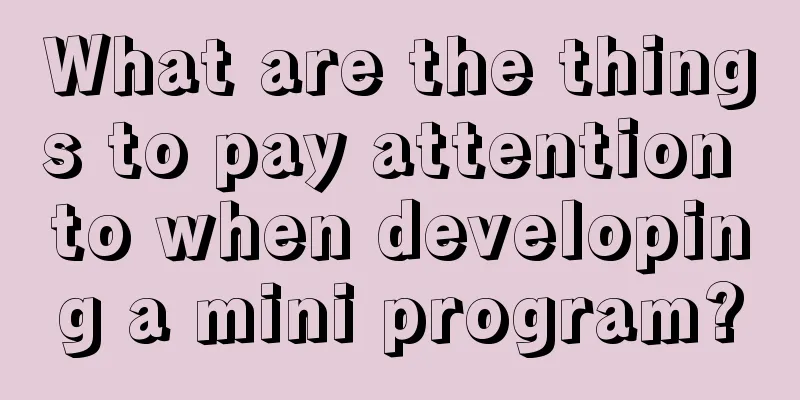Do you know how much money the App Store has made you in the past ten years?

|
In recent years, the proportion of Apple's "service category" revenue in its overall revenue has been gradually increasing, and the App Store is undoubtedly the biggest growth engine. On July 11, 2008, Apple's App Store was officially launched. In the past decade, the App Store has not only become the world's largest application market, but also brought huge revenue to Apple and developers. On the occasion of the App Store's tenth anniversary, App Annie compiled some App Store data from 2010 to 2018 to review the development trajectory of the App Store. According to App Annie statistics, from July 2010 to December 2017, the total number of downloads of iOS App Store (hereinafter referred to as iOS App Store) has exceeded 170 billion times, and the total user spending has exceeded 130 billion US dollars. The total number of apps available in the App Store officially exceeded 2 million in May 2018. App Store downloads and total user spending have been growing roughly steadily since 2011 (with a slight drop in downloads between 2014 and 2015), and have nearly doubled from 2015 to 2017. In addition, although the number of app downloads in the App Store is gradually increasing, its global download share is declining. In 2012, the download share of the App Store and Google Play was basically "50-50". By 2017, the former's share had shrunk to only 30%. But this does not affect the App Store's ability to attract money. In global user spending, the App Store's share is basically maintained at about twice that of Google Play. So whether it is hardware or software, Apple is using a small share in exchange for the vast majority of market profits. Most of these huge downloads and user spending currently come from users in the Asia-Pacific region. The proportion of downloads and user spending contributed by users in the Asia-Pacific region to the App Store has increased significantly since 2014. In 2017, the number of app downloads in the Asia-Pacific region reached 14.8 billion, accounting for 49% of the global total downloads; the total user spending was US$25.2 billion, accounting for 59% of the global total spending. If we distinguish downloads and user spending by games and apps, games accounted for 31% of all downloads in 2017, but user spending accounted for 71%. Looking at the share of user spending on games in each region, game spending in the Americas accounted for 66% of local total spending, EMEA accounted for 23%, and Asia Pacific accounted for 83%. Is it true that we love to spend money on games? Although game apps have created considerable profits for developers, it does not mean that all developers are rushing to make games. From the statistics, we can see that although games still account for the majority of App Store apps, the proportion of non-game apps is increasing year by year, and has risen from 15% in 2011 to 23% in 2017. Of course, the economic benefits brought by non-game apps to developers are also increasing. Global non-game app user spending has increased from US$1.9 billion in 2011 to US$10.6 billion in 2017. The biggest driving force is in-app subscriptions. From the top five non-game app in-app subscription spending lists over the years, two Chinese apps, Tencent Video and iQiyi, also successfully ranked among the top five in 2017. Looking at specific countries and regions, the United States and China are still the two largest markets, with 40.1 billion and 39.9 billion downloads and total spending of $36 billion and $27.7 billion, respectively. In addition, it is interesting that Russia, the host of this World Cup, ranks fifth in the download rankings, but is not on the list in the user spending rankings. Do fighting nations prefer free apps? In addition, more and more excellent apps are gaining a lot of economic benefits in the App Store. Since 2012, the number of apps that have generated millions of dollars in revenue has been increasing year by year. In 2017, there were 2,857 apps that generated more than one million dollars in revenue, and 564 of them generated revenue of more than 10 million dollars. According to statistics, since July 2010, more than 10,000 apps have generated more than one million dollars in revenue. As for future expectations, App Annie remains confident in the prospects of the App Store. They predict that by 2022, total App Store user spending will reach $75.7 billion, an increase of 80% from 2018. The data and charts in this article are from: App Annie |
<<: WeChat is getting more and more powerful, but these functions are getting worse and worse
>>: What sacrifices have we made for the so-called true full-screen mobile phone?
Recommend
iQiyi and Youku: The secret of attracting millions of users a day
The eternal topic - the pressure of user growth A...
A new feature of Douyin information flow is launched, come and unlock new postures~
As short videos have become an important tool for...
How can online education improve purchase conversion rate?
If you are working in the education industry, you...
E-commerce poster design basics video tutorial
Course Description For many e-commerce designers,...
Where do old iPhone parts go? Apple may be using them to build new phones
Figure 1: Daisy, Apple's recycling robot, can...
Officially abandoning the domestic market: LeWa OS will move overseas
March 2 news, I believe many friends have heard o...
Tutorial on new bond projects, can you make money by buying new bonds? How to buy new bonds
Tutorial on new bond projects, can you make money...
Three major fissions of mobile Internet for free traffic!
After sharing the four major mobile Internet thin...
3 steps to improve the conversion of information flow, learn them!
Why is my ad not getting any exposure no matter h...
Whose nerves were touched by Pechoin’s “high dissemination, low conversion”?
Recently, Pechoin ’s amazing advertisement has se...
Which industries generally use 10G bandwidth for server rental?
Which industries generally use 10G bandwidth for ...
Growth plan for Dewu (Doudu) trendy e-commerce platform
When doing data analysis, we must constantly stre...
What effect can Douyin achieve in attracting traffic? What information is needed for Douyin Blue V certification?
Blue V is a service function specially developed ...
E-commerce hot-selling products? 1 core idea, 8 ways to attract traffic
Do you believe it? Everything in the world will g...
Case study: How to conduct competitive analysis on the current mainstream food delivery apps?
In order to gain a deeper understanding of the fe...









